i bc27f85be50b71b1 (205 page)
Read i bc27f85be50b71b1 Online
Authors: Unknown

multinodular
autonomous and produce excessive amountS of thygoiter
roid hormones.
Thyroid adenoma
Solitary, benign follicular adenomas that function
autonomously result in hyperthyroidism if the adenoma nodule is larger than 4 em in diameter.
May present as a painless lump in the throat.
Thyroid carci
Four types of malignancies in the thyroid gland: papilnoma
lary carcinoma (most common), follicular carcinoma,
anaplastic carcinoma, and medullary carcinoma.
Exogenous hyper
Ingestion of excessive amounts of thyroid hormone or
thyroidism
iodine preparation.
Can be classified as iatrogenic hyperthyroidism, factitious hyperthyroidism, or iodine-induced hyperthyroidism.
Ecropic thyroid
Thyroid hormone c:.tn be produced from the ovaries or
hormone profrom memst:.tric follicular thyroid carcinoma (rare
duction
occurrence).
Sources! Data from WM Burch (cd). Endocrinology for the House Officer (2nd cd).
Bahimore: Williams & Wilkins, 1988; 126; and N Woolf (cd). Pathology, Basic and Sys·
temic. London: Saunders, 1998;863-873.


658
AClJTE ARE HANDBOOK FOR PHYSICAL THERAPISTS
Management of hyperthyroidism may consist of any of the
following7-9:
• Pharmacologic management with the following:
Antithyroid medications of the thionamide series (e.g., propylthiouracil, methimazole [Tapazole], carbimazole lused only in Europe and the United Kingdom I)
Beta-adrenergic blockers (e.g., propranolol Iinderall)
Iodine (e.g., potassium or sodium iodide [strong iodine solution, Lugol's solution])
Corticosteroids
• Radioiodine-131
• Surgical subtOtal-thyroidectomy (indicated for patients who are
pregnant, children who have adverse reactions to antithyroid medications, patients with excessively large goiters that are compressive, and patients with thyroid carcinoma) Hypothyroidism
Hypothyroidism is the insufficient exposure of peripheral tissues to
thyroid hormones. It affects growth and development, as well as
many cellular processes. In the majority of cases, hypothyroidism
is caused by decreased thyroid hormone production rather than
the failure of tissues to respond to thyroid hormones. Primary
hypothyroidism refers to thyroid gland dysfunction, whereas secolldary hypothyroidism refers to pituitary disease resulting in reduced TSH levels.
The following are the causes of primary and secondary hypothyroid ism7•IO:
• Maldevelopment, hypoplasia, or aplasia of the thyroid gland
• Inborn deficiencies of biosynthesis or action of thyroid hormone
•
Hashimoto's thyroiditis (autoimmune inflammation)
•
Lymphatic thyroiditis (autoimmune inflammation that has
hyperthyroid symptoms)
•
Hypopituitarism or hypothalamic disease
•
Severe iodine deficiency

ENDOCRINE SYSTEM
659
• Thyroid ablation from surgery, radiation of cervical neoplasms,
or radioiodine therapy for hyperthyroidism
• Drug toxiciry (from amiodarone, anrithyroids, or lithium)
General signs and symptoms of hypothyroidism vary according to
the degree of thyroid deficiency. Signs and symptoms include the
following 1.6;
• Lethargy, somnolence, and slowness of thought
• Constipation and ileus (decreased motility)
• Rough, scaly, dry, and cool skin and decreased perspiration
• Slow relaxation time of deep tendon reflexes
• Marked cold intolerance
• Weakness, muscle cramps, and aching and stiffness
• Hoarseness and decreased hearing
• Paresthesia
• Pallid and yellow-timed skin
• Nonpirring edema of eyelids, hands, and feet
• Bradycardia with elevated systolic and diastolic blood ptessure
• Cardiac failure
• Pericardial effusion
• Coma and respiratory failure in severe cases
Management of hypothyroidism typically consists of lifelong thyroid hormone replacemenr. Medicarions commonly used to trear hypothyroidism are rhe following8,9;
• Syntheric rhyroid hormones (e.g., levothyroxine sodium [Cytolen, Levoid, Levothroid, Synthroid], Iiothyronine L Cytomei, Cyrominel, and liorrix lEurhroid, Thyrolar])
• Natural thyroid hormones (e.g., Decloid, Thyrar, Thryrocrine,
ThryroTeric, and thyroglobulin [Proloid])
• Adenohypophyseal hormones (e.g., TSH [Thytropar] and thyrotropin-releasing hormone [i.e., protirelin])



660
ACUTE CARE HANDBOOK FOR PHYSICAL THERAPISTS
Clinical Tip
Properly managed hyper- or hypothyroidism should not
affect physical therapy intervention or activity tolerance. If
the signs or symptoms mentioned above are present during
physical therapy evaluation, treatment, or both, consultation with the medical team is indicated to help differentiate the etiology of the physical findings. See Screening for Metabolic and Endocrine Dysfunction for more information on screening.
Pituitary Gland
Function
Hormones secreted by the pituitary gland are responsible for a variety
of functions that are summarized in Table lJ-S. Secretions of hormones from the pituitary glands are closely regulated by the hypothalamus and by negative feedback from the hormones that are secreted from the pituitary gland."
Pituitary Tests
Individual pituitary hormone levels can be measured (I) by random
blood samples; (2) by blood samples before and after the administration of specific releasing substances, such as serum TSH, during a thyrotropin-releasing hormone test (see Table 11-2); or (3) by blood samples before and after the administration of specific stimuli acting
directly on the pituitary or via the hypothalamus, such as serum
growth hormone (GH), serum cortisol, and plasma adrenocorticotropic hormone (ACTH).
Table 11-6 describes common tests of pituitary function. Pituitary
function can also be evaluated by (1) thyroid function tests, which
are an indirect assessment of TSH secretion from the pituitary, and
(2) plain x-rays or computed tomography with contraSt to highlight
a pituitary tumor. II


